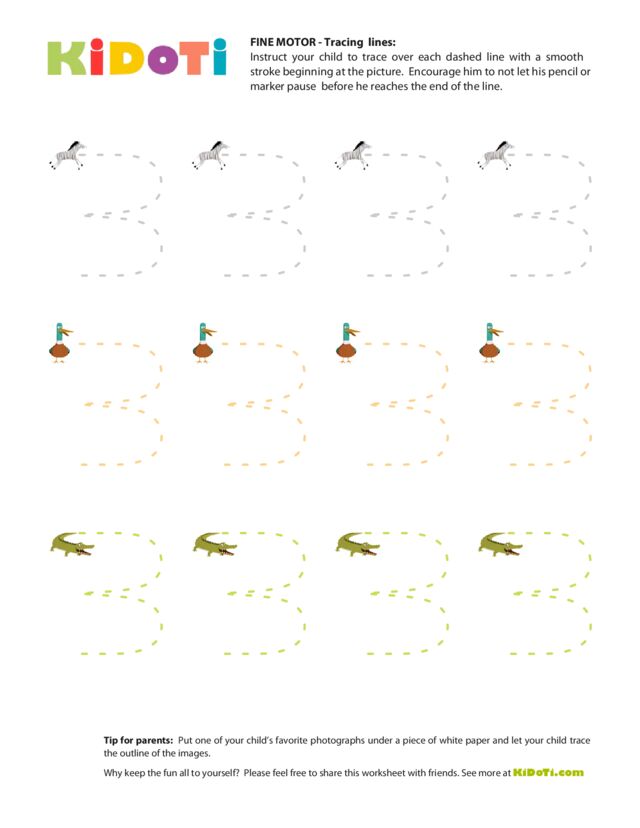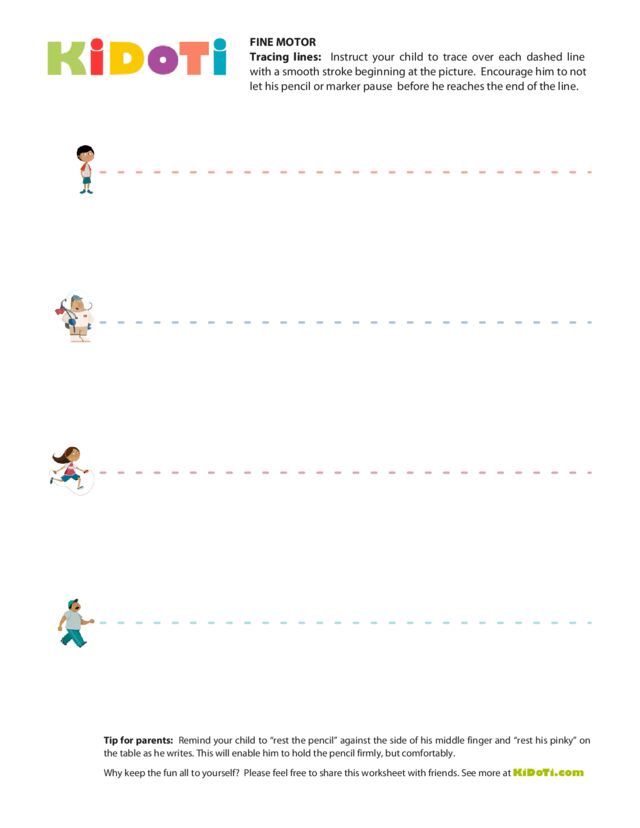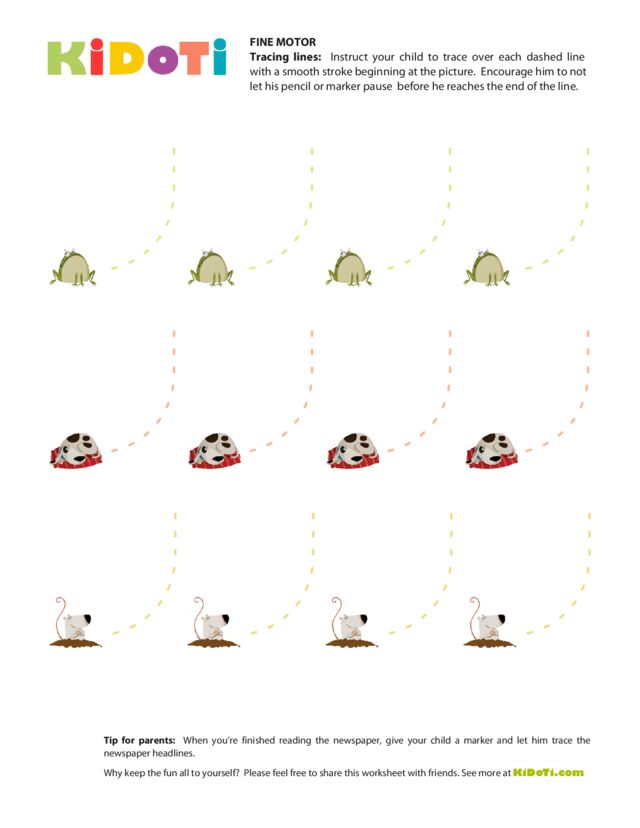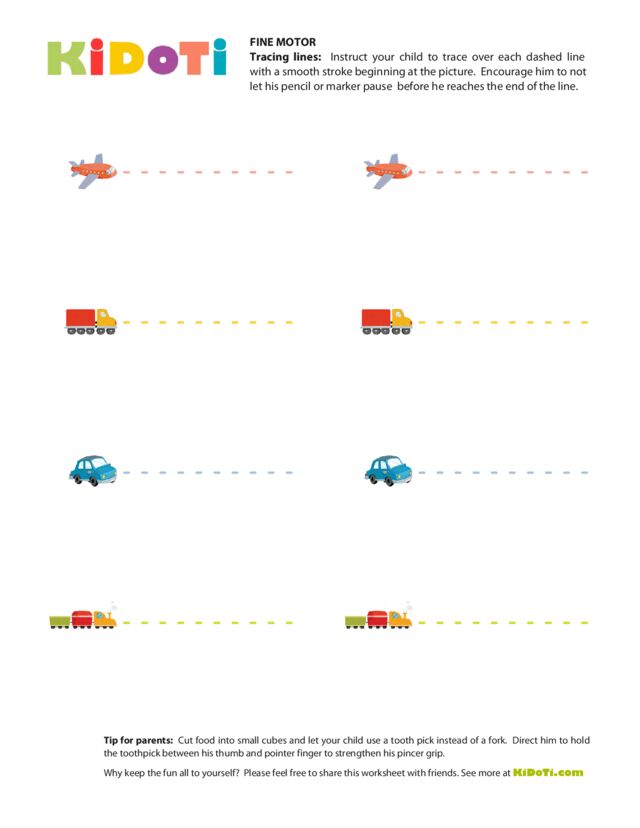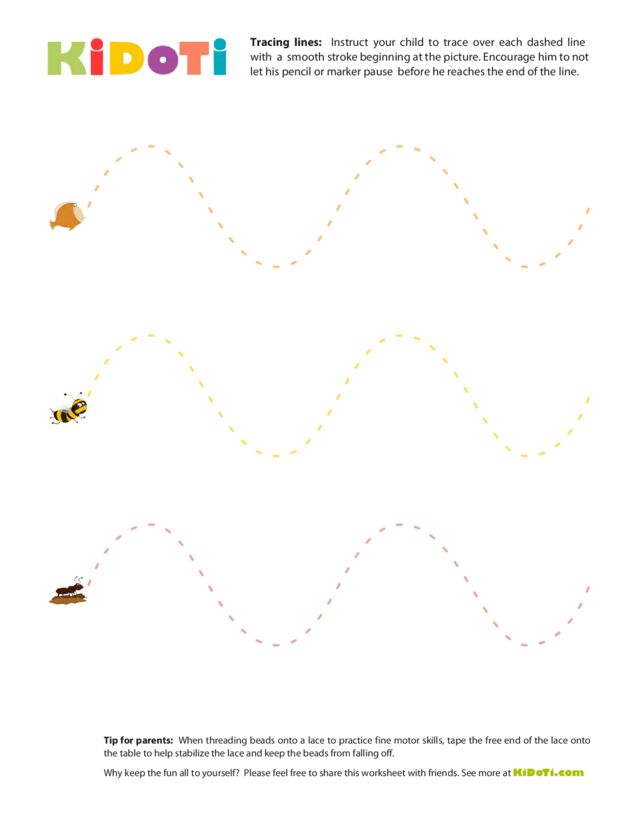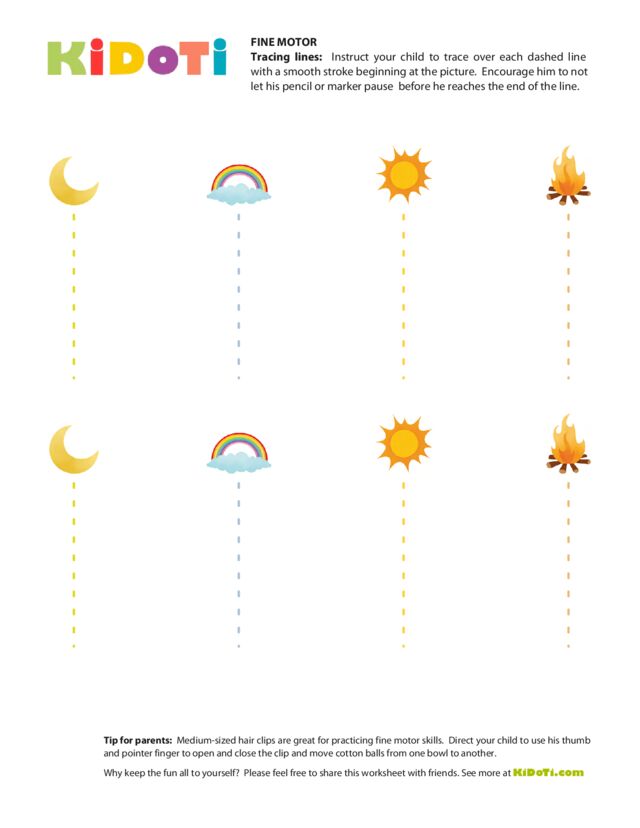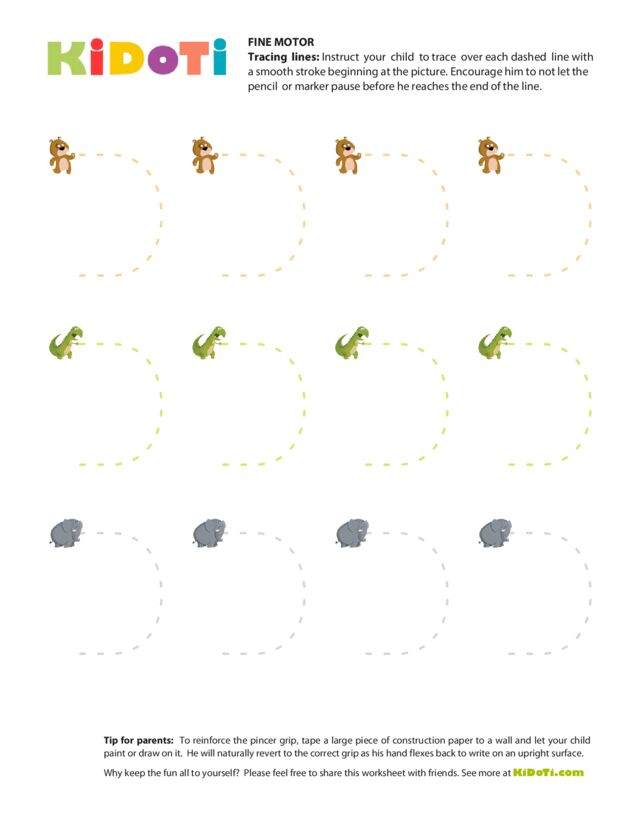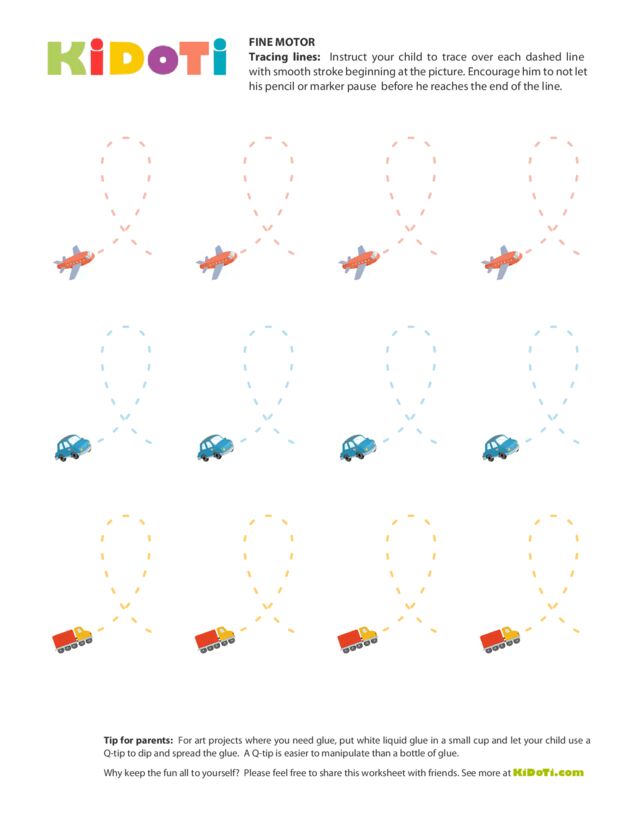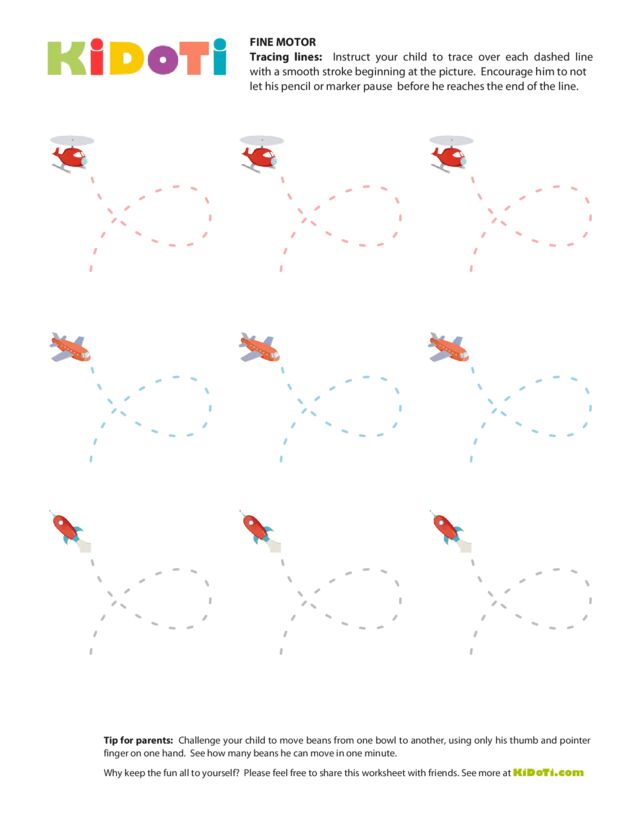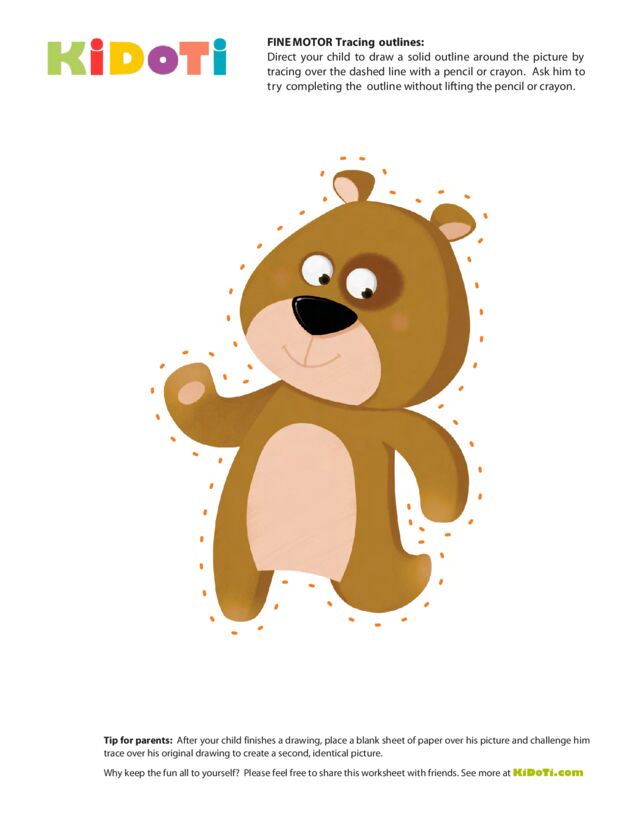Successful writing depends on a strong pencil grip. The following tracing worksheets will help your child develop strong writing skills by starting with easy-to-complete activities (like tracing short, straight lines) and progressing to more advanced activities (like tracing loopy curves).
Tracing worksheets are helpful for learning to trace lines
Tracing lines gives young children opportunities to practice controlling a pencil while they strengthen their pincer grip. The dotted line serves as a guide and also gives a child immediate feedback regarding his pencil control. A child may decide to slow his speed or press down with less force as he watches his pencil line on the paper and judges his accuracy.
Learning to trace lines also gets a child ready to learn how to correctly form the uppercase and lower case letters as well as the numerals. These tracing worksheets ask children to practice making lines and curves that are used in forming letters and numerals.
Finally, when a child traces lines, he is getting important hand/eye coordination practice. He is learning to move his small muscles in a controlled way that respond to what he is seeing.
Tips for using these tracing worksheets
When you hand your child the worksheet, first ask him to trace the line with his finger. Direct him to put the index finger of his dominant hand down at the point where the picture touches the dotted line. Then ask him to “draw” over the dotted line with his finger, moving away from the picture. Ask him to do this several times so that he will be very familiar with the direction and shape of the line.
Then ask your child to complete the worksheet using a golf pencil. These “half-sized” pencils are the perfect size and weight for little fingers. The #2 lead is soft so that children do not have to apply excessive pressure to see their line on top of the colored dotted lines. Also, the graphite lead provides some “drag” on the paper allowing a young child to feel the pencil move across the page. This makes the pencil easier to control. Make sure that your child is using the proper pencil grip as he works. On the long lines, encourage him to keep the pencil point on the paper as he moves his wrist slightly to the right before continuing to move the pencil along the line.
When your child is comfortable and accurate using the golf pencil, let him try tracing the lines with a fine-tipped marker. While the felt tip also provides some “drag” to help your child feel the marker on the paper, the longer length and smooth plastic barrel often make a marker more difficult to control.
Extra tracing activities to try at home to supplement the tracing worksheets
- Beads are a great way to hone fine motor skills that are needed when tracing lines or writing letters and numbers, since a child must use the correct pincer grip to accurately control each bead and maneuver it on the lace. When using beads to practice fine motor skills, tape the free end of a lace onto the table to help stabilize the lace and keep the beads from falling off.
- To reinforce the pincer grip, tape a large piece of newsprint or construction paper to a wall or door and let your child paint or draw on this page. When writing on an upright surface, a child will naturally revert to the correct pincer grip is stronger as their hand is flexed back.
- Once your child has a strong pincer grip, buy him lace-up shoes so he can begin learning to tie shoe laces.
- When you’re finished reading the newspaper, give your child a marker and let him trace the newspaper headlines. Or, put one of your child’s favorite photographs under a piece of white paper and let your child trace the outline of the images.
- Challenge your child to move beans from one bowl to another, using only his thumb and pointer finger on one hand. See how many beans he can move in one minute. Or, cut food into small cubes and let your child use a tooth pick instead of a fork. Direct him to hold the toothpick between his thumb and pointing finger to strengthen his pincer grip. Also, medium-sized hair clips are great for practicing fine motor skills. Direct your child to use him thumb and pointer finger to open and close the clip and move cotton calls from one bowl to another. With strong fine motor skills, learning the proper pencil grip becomes much easier.
- Let your child use an outdated nail polish to practice writing numbers on a piece of paper. The small brush and handle along with the bright color will add interest to this activity. Encourage him to hold the handle with the proper pincer grip.
- Pinching bubble wrap between his thumb and pointer finger to pop the bubbles will strengthen your child’s pincer grip, which is critical for holding the pencil correctly.
- Frosty car windows in the winter or steamy mirrors in a bathroom are fun places to practice writing! Remind your child to use the pointer finger of his dominant hand. Also, finger painting is a great way to practice letter and number formation. If your child makes a mistake, he can easily “erase” the error by wiping the paper and beginning again. Or, at bath time, spread some shaving cream on the bath tub wall and encourage your child to finger paint letters with the pointer finger on his dominant hand.
